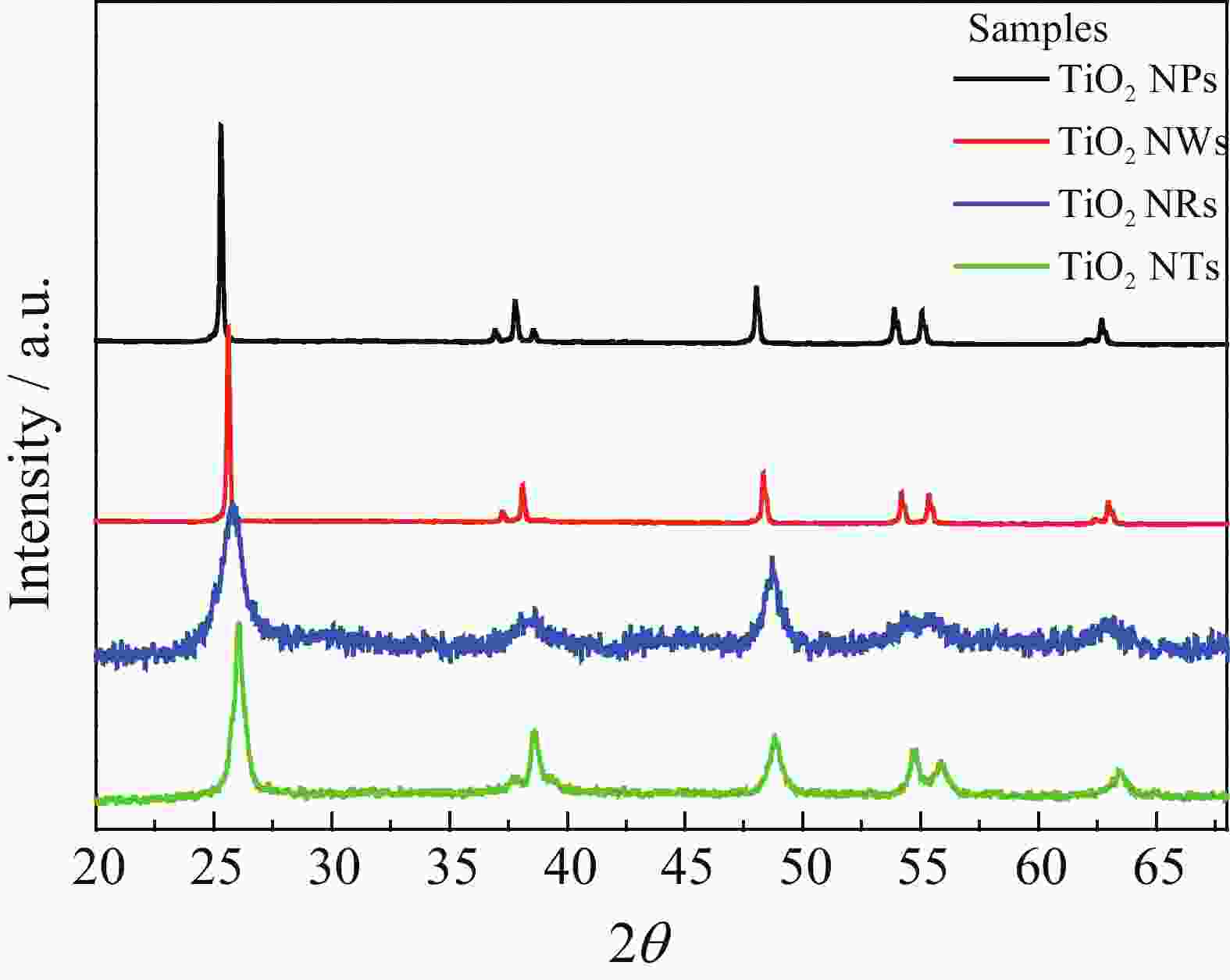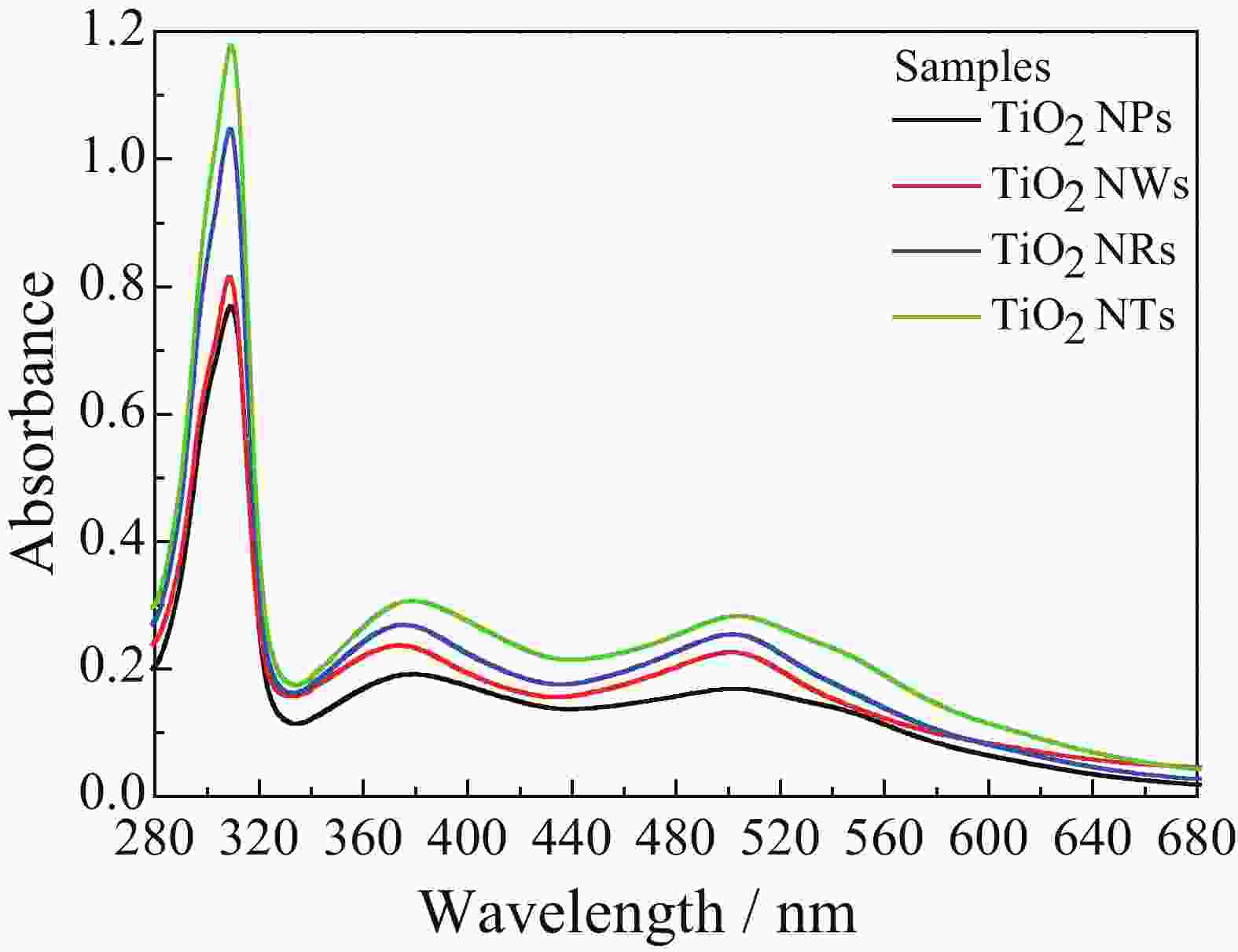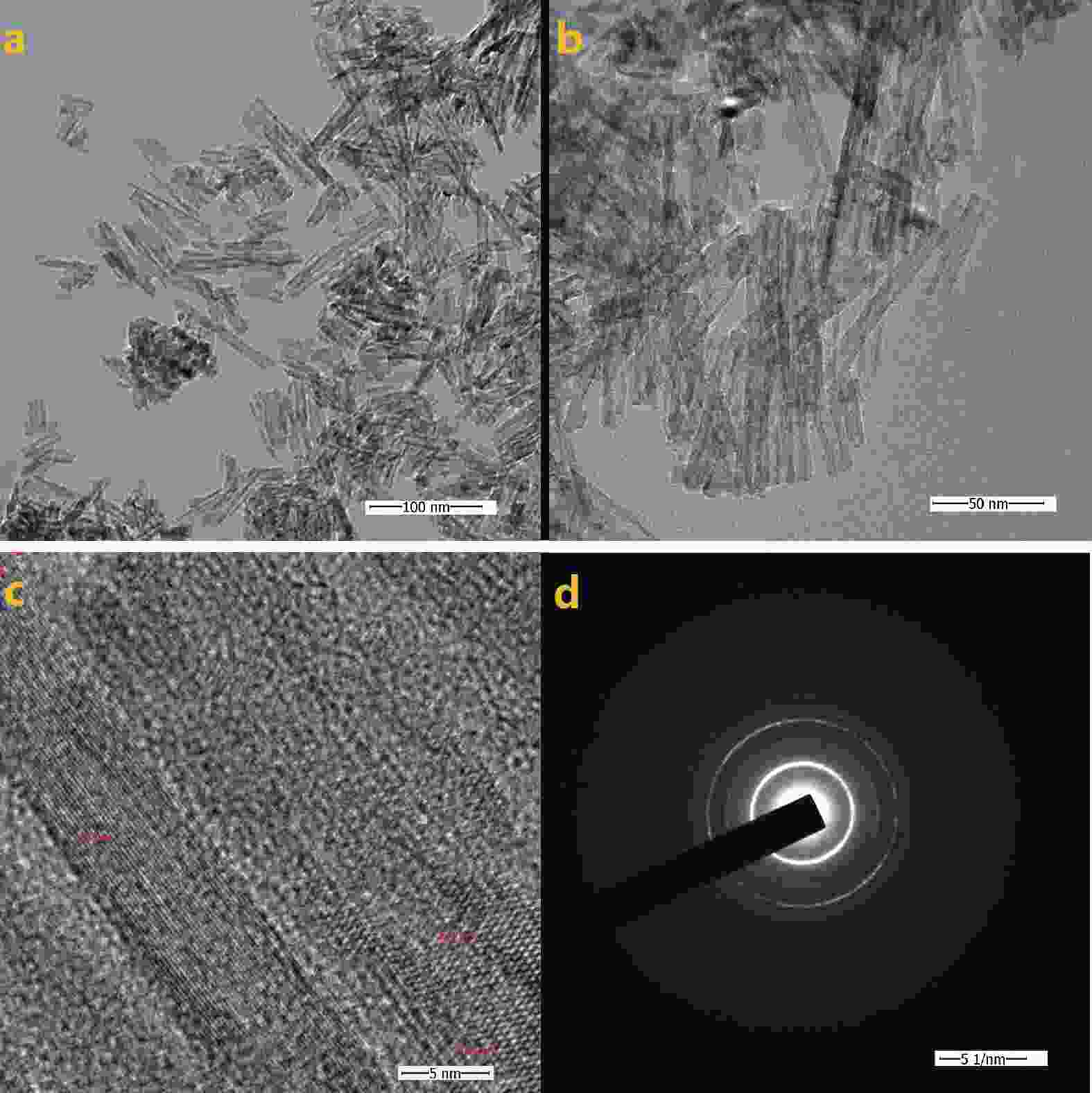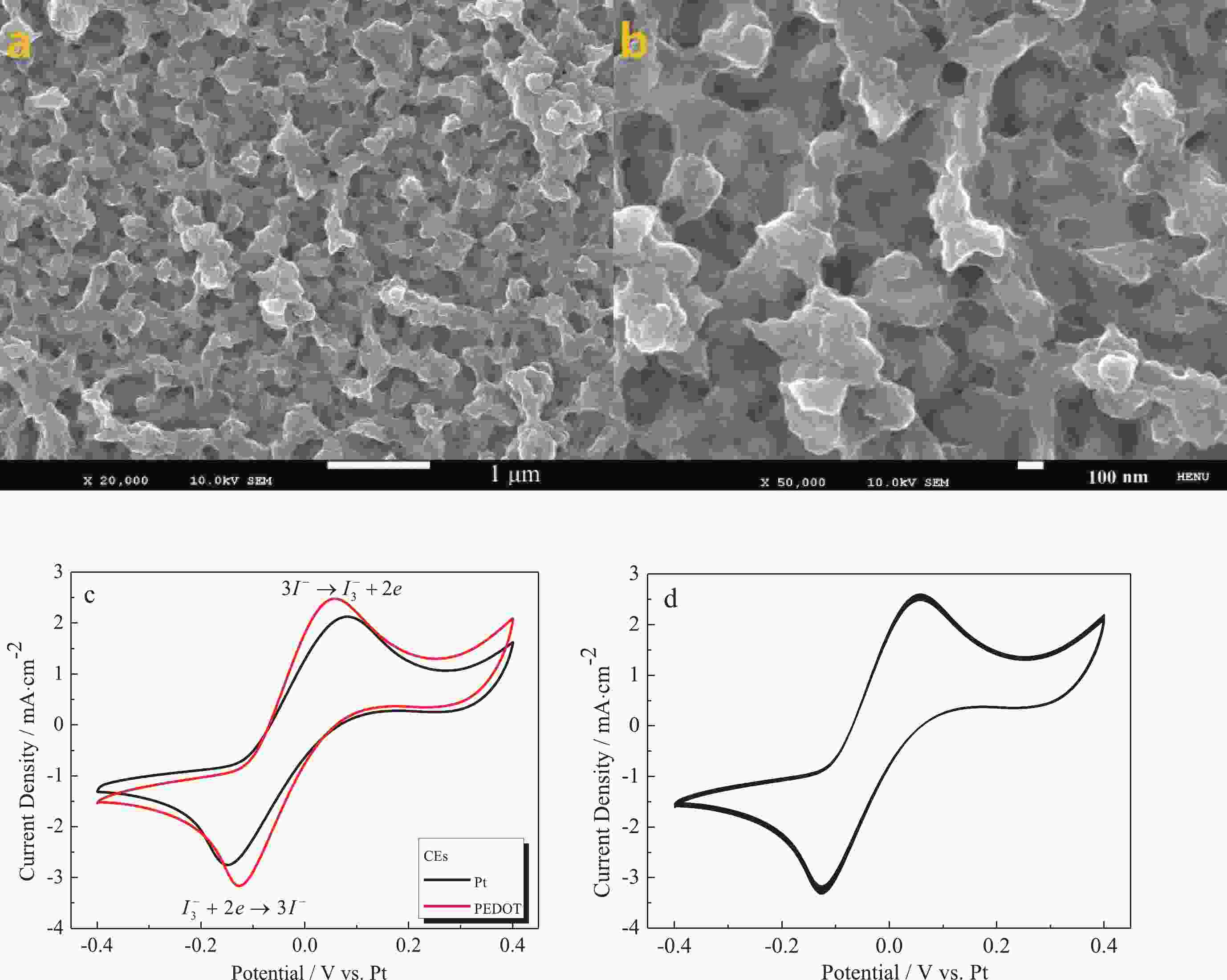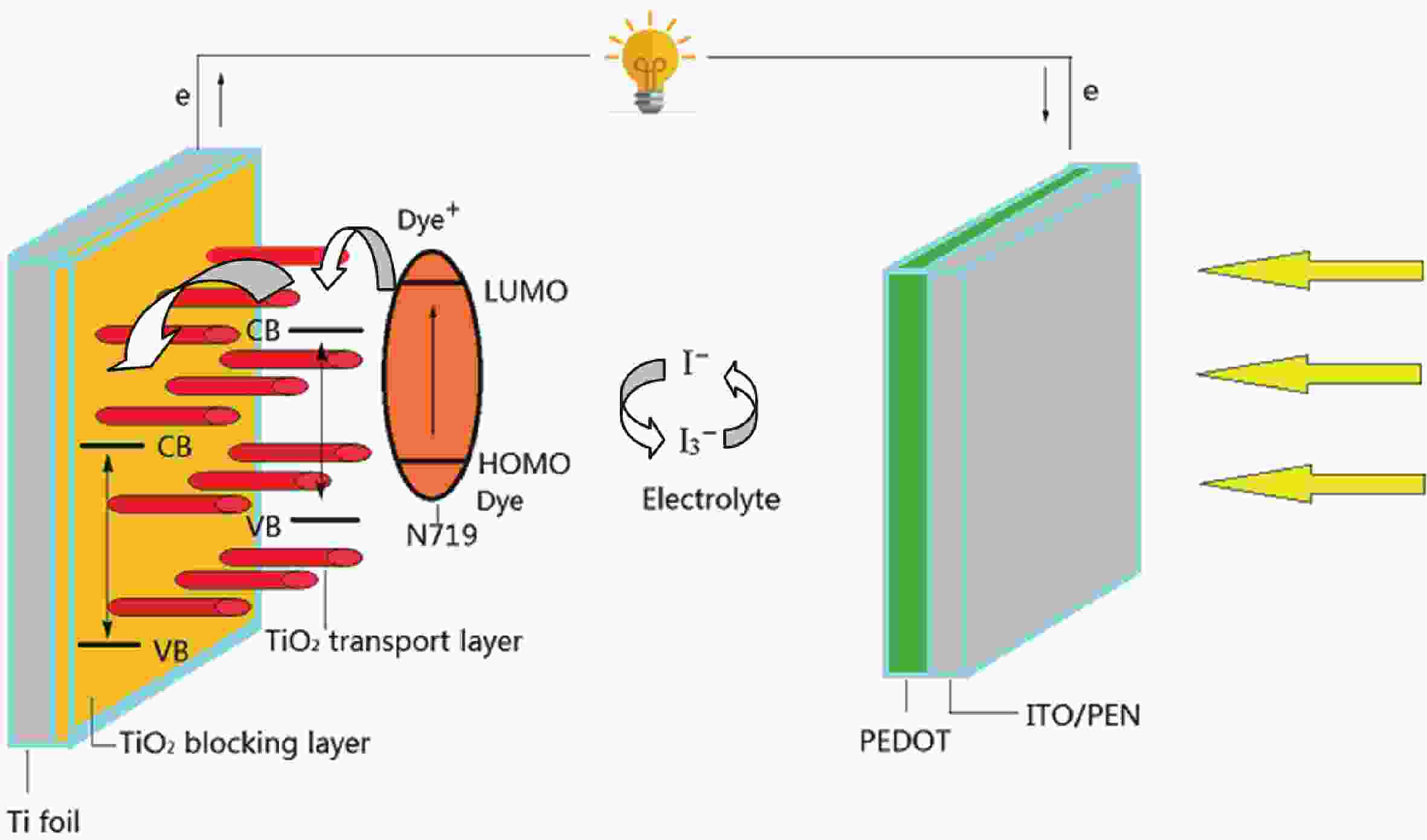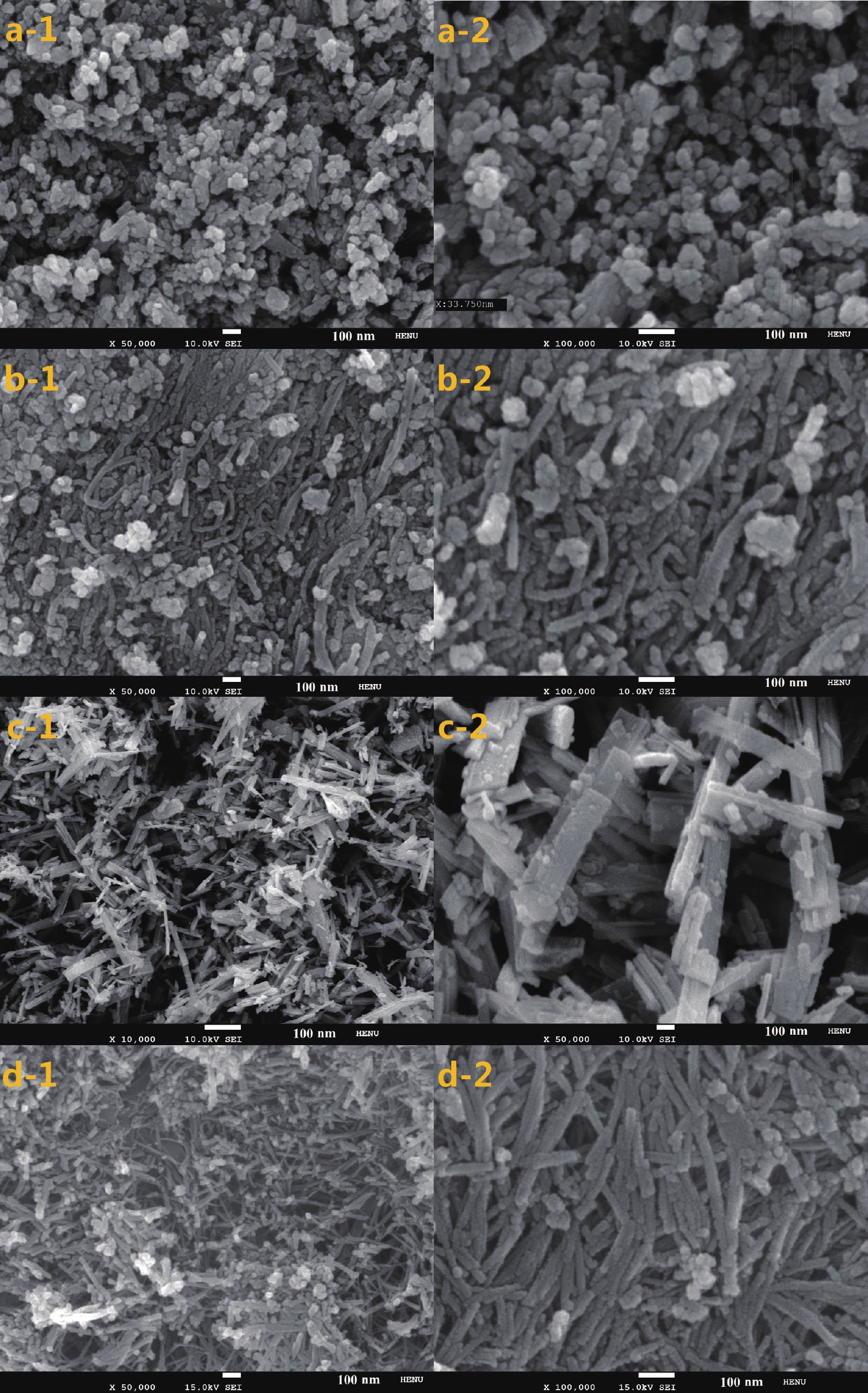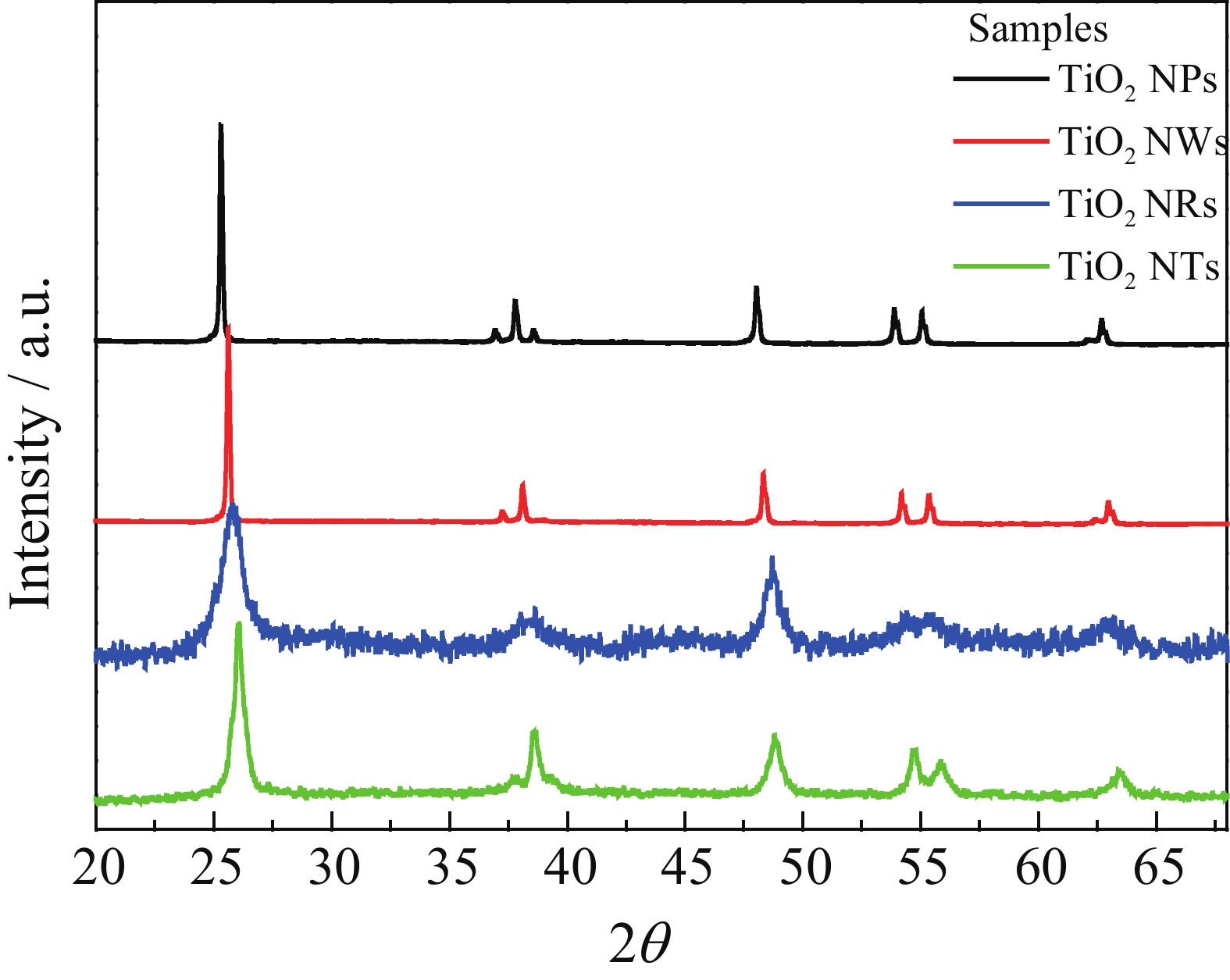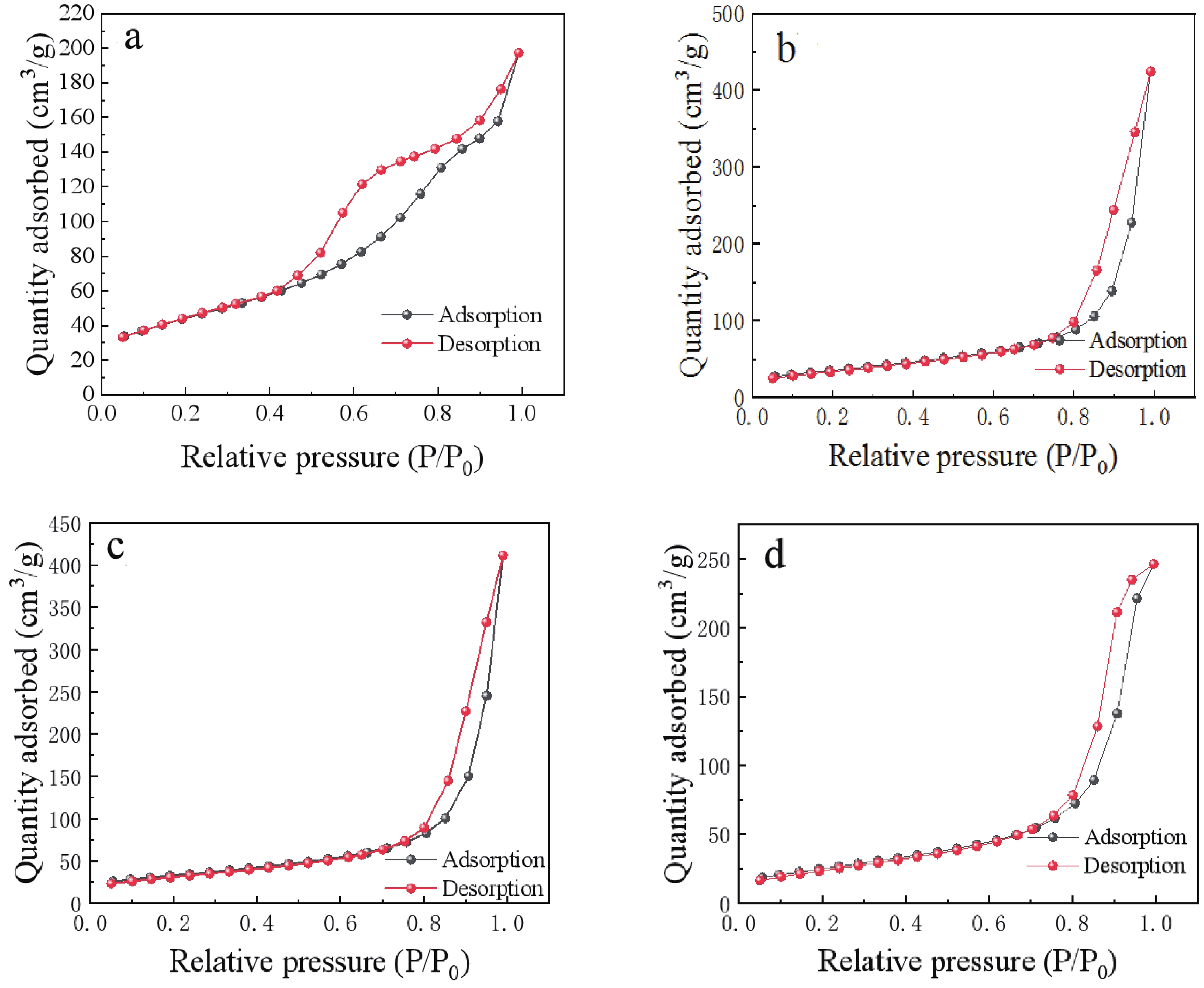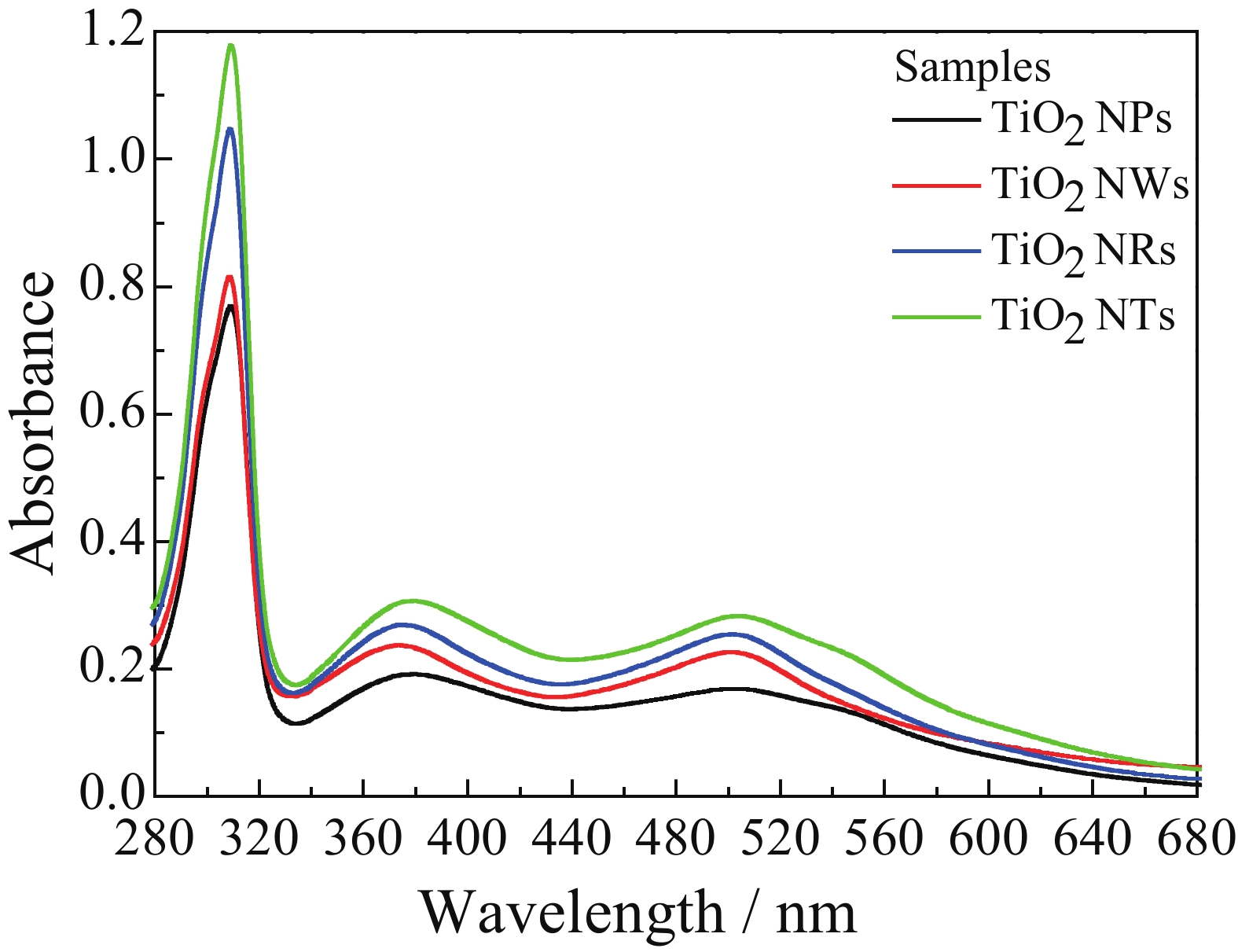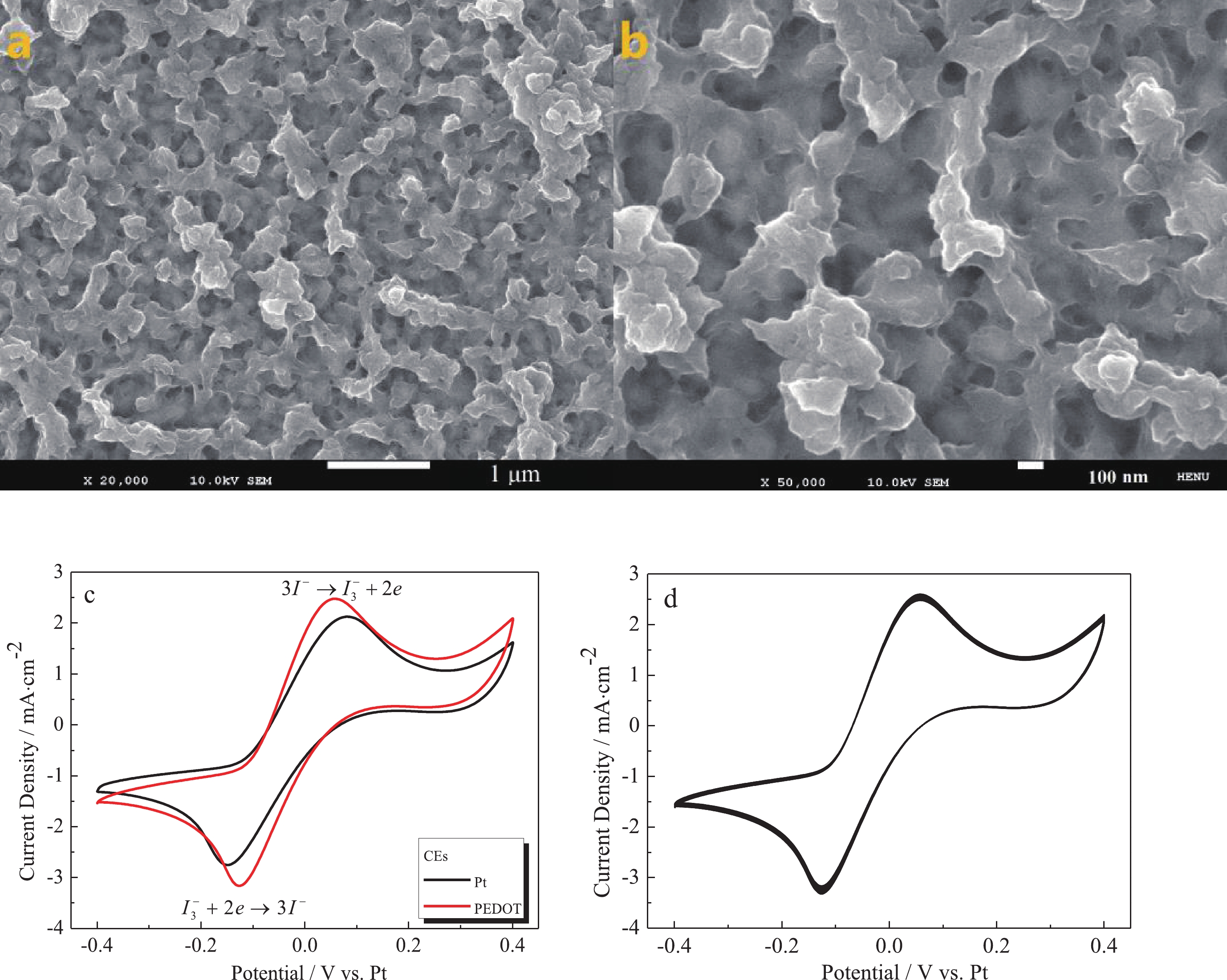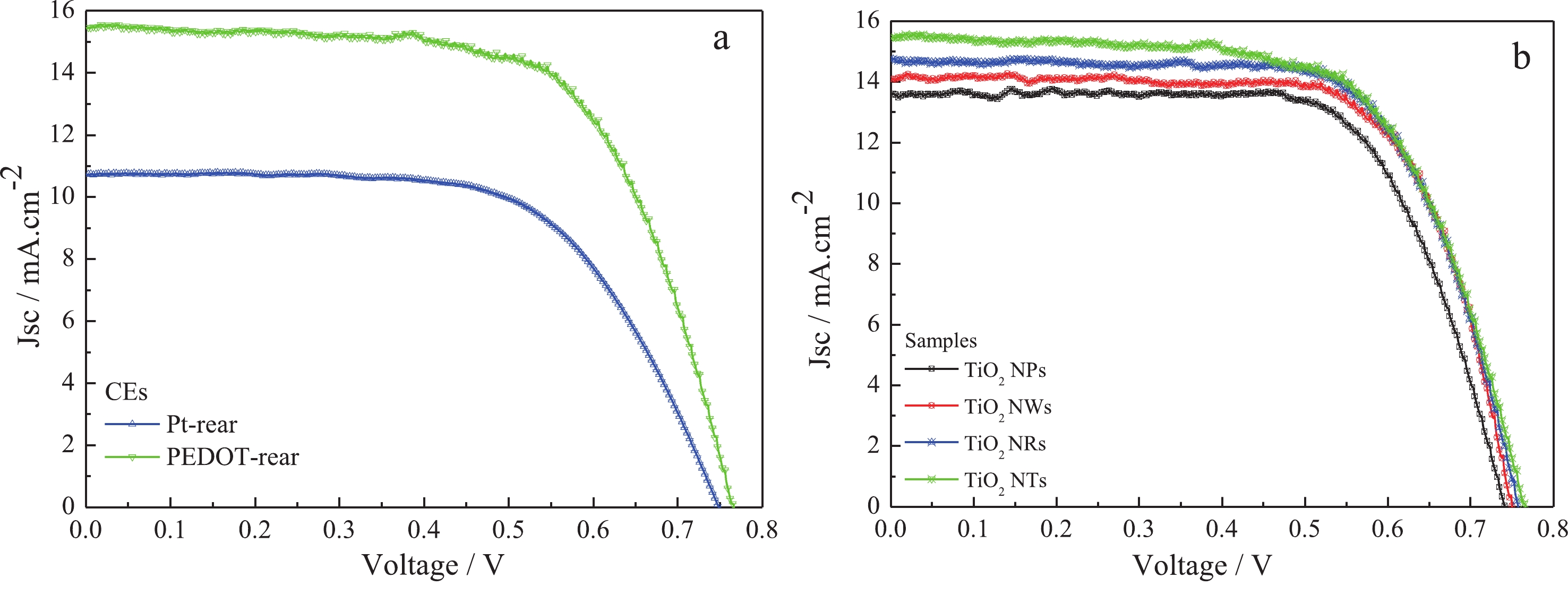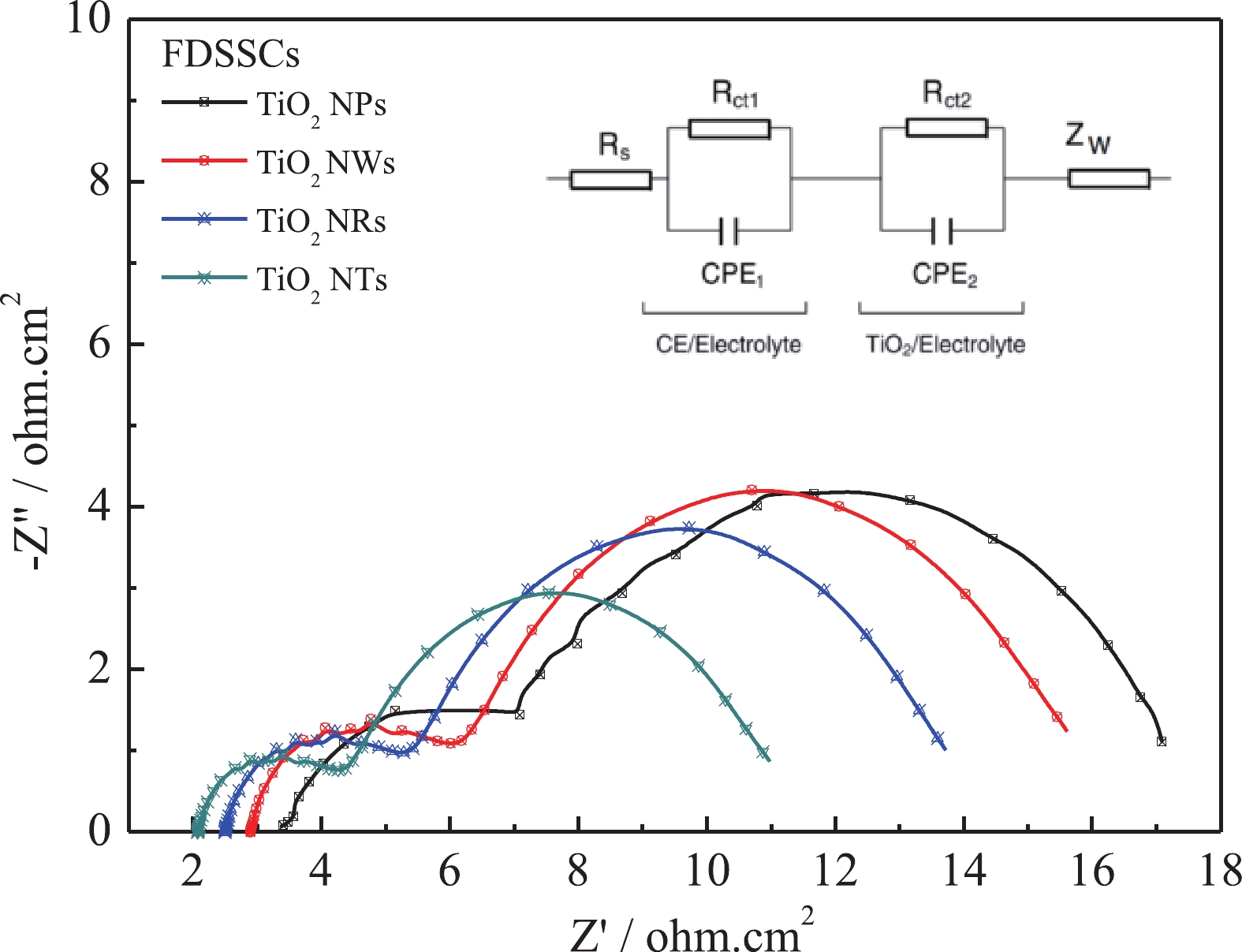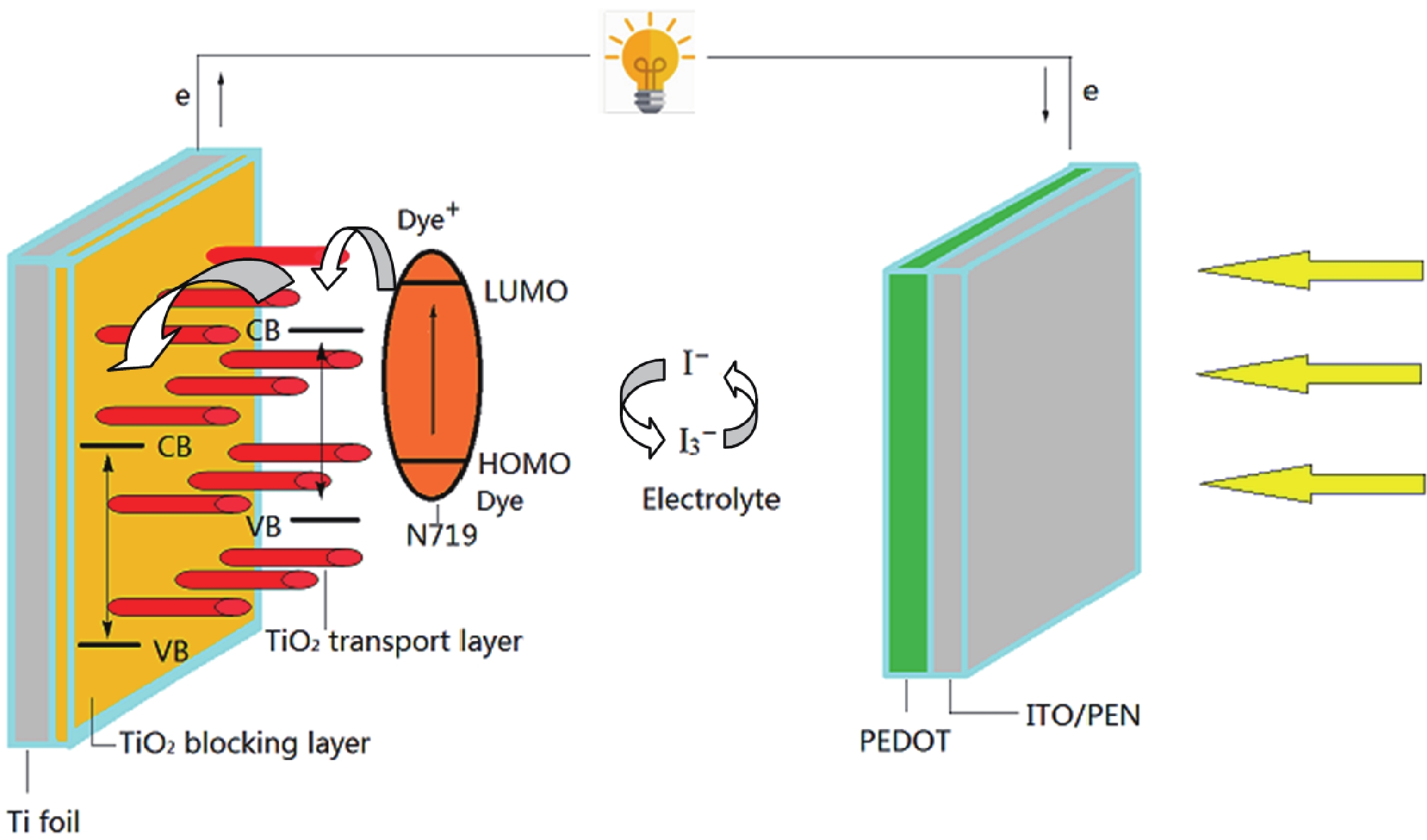| Citation: |
Zhe He, Gentian Yue, Yueyue Gao, Chen Dong, Furui Tan. Efficient flexible dye-sensitized solar cells from rear illumination based on different morphologies of titanium dioxide photoanode[J]. Journal of Semiconductors, 2024, 45(2): 022801. doi: 10.1088/1674-4926/45/2/022801
Z He, G T Yue, Y Y Gao, C Dong, F R Tan. Efficient flexible dye-sensitized solar cells from rear illumination based on different morphologies of titanium dioxide photoanode[J]. J. Semicond, 2024, 45(2): 022801. doi: 10.1088/1674-4926/45/2/022801
Export: BibTex EndNote
|
Efficient flexible dye-sensitized solar cells from rear illumination based on different morphologies of titanium dioxide photoanode
doi: 10.1088/1674-4926/45/2/022801
More Information-
Abstract
The TiO2 with nanoparticles (NPs), nanowires (NWs), nanorods (NRs) and nanotubes (NTs) structures were prepared by using a in-situ hydrothermal technique, and then proposed as a photoanode for flexible dye-sensitized solar cell (FDSSC). The influences of the morphology of TiO2 on the photovoltaic performances of FDSSCs were investigated. Under rear illumination of 100 mW·cm−2, the power conversion efficiencies of FDSSCs achieved 6.96%, 7.36%, 7.65%, and 7.83% with the TiO2 photoanodes of NPs, NWs, NRs, and NTs and PEDOT counter electrode. The FDSSCs based on TiO2 NRs and NTs photoanodes have higher short circuit current densities and power conversion efficiencies than that of the others. The enhanced power conversion efficiency is responsible for their nanotubes and rod-shaped ordered structures, which are more beneficial to transmission of electron and hole in semiconductor compared to the TiO2 nanoparticles and nanowires disordered structure.-
Keywords:
- dye-sensitized solar cells,
- photoanode,
- TiO2,
- morphology
-
References
[1] Briscoe J, Dunn S. The future of using earth-abundant elements in counter electrodes for dye-sensitized solar cells. Adv Mater Deerfield Beach Fla, 2016, 28, 3802 doi: 10.1002/adma.201504085[2] Bellisario D O, Paulson J A, Braatz R D, et al. An analytical solution for exciton generation, reaction, and diffusion in nanotube and nanowire-based solar cells. J Phys Chem Lett, 2016, 7, 2683 doi: 10.1021/acs.jpclett.6b01053[3] Kakiage K, Aoyama Y, Yano T, et al. Highly-efficient dye-sensitized solar cells with collaborative sensitization by silyl-anchor and carboxy-anchor dyes. Chem Commun, 2015, 51, 15894 doi: 10.1039/C5CC06759F[4] Huang J Y, He S H, Zhang W Z, et al. Efficient and stable all-inorganic CsPbIBr2 perovskite solar cells enabled by dynamic vacuum-assisted low-temperature engineering. Sol RRL, 2022, 6, 2100839 doi: 10.1002/solr.202100839[5] Fujishima A, Honda K. Electrochemical photolysis of water at a semiconductor electrode. Nature, 1972, 238, 37 doi: 10.1038/238037a0[6] Hosono E, Matsuda H, Honma I, et al. Synthesis of a perpendicular TiO2 nanosheet film with the superhydrophilic property without UV irradiation. Langmuir, 2007, 23, 7447 doi: 10.1021/la701117a[7] Han Z T, Li S S, Li J J, et al. Facile synthesis of ZnO nanowires on FTO glass for dye-sensitized solar cells. J Semicond, 2013, 34, 074002 doi: 10.1088/1674-4926/34/7/074002[8] Gapale D L, Bardapurkar P P, Arote S A, et al. Humidity sensing properties of spray deposited Fe doped TiO2 thin film. J Semicond, 2021, 42, 122805 doi: 10.1088/1674-4926/42/12/122805[9] Thomas A G, Syres K L. Adsorption of organic molecules on rutile TiO2 and anatase TiO2 single crystal surfaces. Chem Soc Rev, 2012, 41, 4207 doi: 10.1039/c2cs35057b[10] Cai X F, Zhang P, Wei S H. Revisit of the band gaps of rutile SnO2 and TiO2: A first-principles study. J Semicond, 2019, 40, 092101 doi: 10.1088/1674-4926/40/9/092101[11] Feng X J, Shankar K, Varghese O K, et al. Vertically aligned single crystal TiO2 nanowire arrays grown directly on transparent conducting oxide coated glass: Synthesis details and applications. Nano Lett, 2008, 8, 3781 doi: 10.1021/nl802096a[12] Liu B, Aydil E S. Growth of oriented single-crystalline rutile TiO2 nanorods on transparent conducting substrates for dye-sensitized solar cells. J Am Chem Soc, 2009, 131, 3985 doi: 10.1021/ja8078972[13] Sadhu S, Jaiswal A, Adyanthaya S, et al. Surface chemistry and growth mechanism of highly oriented, single crystalline TiO2 nanorods on transparent conducting oxide coated glass substrates. RSC Adv, 2013, 3, 1933 doi: 10.1039/C2RA21516K[14] Sadhu S, Gupta P, Poddar P. Physical mechanism behind enhanced photoelectrochemical and photocatalytic properties of superhydrophilic assemblies of 3D-TiO2 microspheres with arrays of oriented, single-crystalline TiO2 nanowires as building blocks deposited on fluorine-doped tin oxide. ACS Appl Mater Interfaces, 2017, 9, 11202 doi: 10.1021/acsami.6b15420[15] Ri J H, Wu S F, Jin J P, et al. Growth of a sea urchin-like rutile TiO2 hierarchical microsphere film on Ti foil for a quasi-solid-state dye-sensitized solar cell. Nanoscale, 2017, 9, 18498 doi: 10.1039/C7NR06360A[16] He S H, Shang L W, Gao Y Y, et al. Holistically modulating charge recombination via trisiloxane surface treatment for efficient dye-sensitized solar cells. J Alloys Compd, 2022, 896, 162864 doi: 10.1016/j.jallcom.2021.162864[17] Fan K, Li R J, Chen J N, et al. Recent development of dye-sensitized solar cells based on flexible substrates. Sci Adv Mat, 2013, 5, 1596 doi: 10.1166/sam.2013.1615[18] Song L X, Yin X, Xie X Y, et al. Highly flexible TiO2/C nanofibrous film for flexible dye-sensitized solar cells as a platinum- and transparent conducting oxide-free flexible counter electrode. Electrochim Acta, 2017, 255, 256 doi: 10.1016/j.electacta.2017.09.180[19] He S H, Lan Z, Zhang B, et al. Holistically optimizing charge carrier dynamics enables high-performance dye-sensitized solar cells and photodetectors. ACS Appl Mater Interfaces, 2022, 14, 43576 doi: 10.1021/acsami.2c13009[20] Gao X M, Shen Z T, Yue G T, et al. Sodium molybdate-assisted synthesis of a cobalt phosphide hybrid counter electrode for highly efficient dye-sensitized solar cells. ACS Appl Energy Mater, 2021, 4, 3851 doi: 10.1021/acsaem.1c00248[21] Du Y, Shen Z, Yue G, et al. CoP@Ni2P microcrystals in situ grown on carbon fiber as counter electrode catalysts for high-efficiency dye-sensitized solar cells. Mater Today Sustain, 2022, 20, 100262 doi: 10.1016/j.mtsust.2022.100262[22] He Y, Shen Z T, Yue G T, et al. A dye-sensitized solar cells with enhanced efficiency based on a “pillared effect” of CoMoP2 @Mxene@CNTs composite counter electrode. J Alloys Compd, 2022, 922, 166279 doi: 10.1016/j.jallcom.2022.166279[23] Gao M, Shen Z T, Yue G T, et al. One-pot hydrothermal in situ growth of In4SnS8@MoS2@CNTs as efficient Pt-free counter electrodes for dye-sensitized solar cells. J Alloys Compd, 2023, 932, 167643 doi: 10.1016/j.jallcom.2022.167643[24] Yu F D, Han G S, Tu Y J, et al. Electron extraction mechanism in low hysteresis perovskite solar cells using single crystal TiO2 nanorods. Sol Energy, 2018, 167, 251 doi: 10.1016/j.solener.2018.04.009[25] Lan Z, Xu X X, Zhang X Z, et al. Low-temperature solution-processed efficient electron-transporting layers based on BF4−-capped TiO2 nanorods for high-performance planar perovskite solar cells. J Mater Chem C, 2018, 6, 334 doi: 10.1039/C7TC04899H[26] Chen W C, Yeh M H, Lin L Y, et al. Double-wall TiO2 nanotubes for dye-sensitized solar cells: A study of growth mechanism. ACS Sustainable Chem Eng, 2018, 6, 3907 doi: 10.1021/acssuschemeng.7b04250[27] Guo M, Chen J, Zhang J, et al. Coupling plasmonic nanoparticles with TiO2 nanotube photonic crystals for enhanced dye-sensitized solar cells performance. Electrochim Acta, 2018, 263, 373 doi: 10.1016/j.electacta.2018.01.039[28] Ako R T, Ekanayake P, Lim C M. An analysis of DSSC performance based on nanosphere, nanorod, and nanoparticle anode morphologies. J Appl Phys, 2016, 120, 1089 doi: 10.1063/1.4965961[29] Liu Y Y, Ye X Y, An Q Q, et al. A novel synthesis of the bottom-straight and top-bent dual TiO2 nanowires for dye-sensitized solar cells. Adv Powder Technol, 2018, 29, 1455 doi: 10.1016/j.apt.2018.03.008[30] Qiu Q Q, Li S, Jiang J J, et al. Improved electron transfer between TiO2 and FTO interface by N-doped anatase TiO2 nanowires and its applications in quantum dot-sensitized solar cells. J Phys Chem C, 2017, 121, 21560 doi: 10.1021/acs.jpcc.7b07795[31] Xiao Y M, Wu J H, Yue G T, et al. The preparation of titania nanotubes and its application in flexible dye-sensitized solar cells. Electrochim Acta, 2010, 55, 4573 doi: 10.1016/j.electacta.2010.03.011[32] Li K X, Yue G T, Tan F R. A binder-free CF|PANI composite electrode with excellent capacitance for asymmetric supercapacitors. J Semicond, 2023, 44, 032701 doi: 10.1088/1674-4926/44/3/032701[33] Liu X Q, Liang Y, Yue G T, et al. A dual function of high efficiency quasi-solid-state flexible dye-sensitized solar cell based on conductive polymer integrated into poly (acrylic acid-co-carbon nanotubes) gel electrolyte. Sol Energy, 2017, 148, 63 doi: 10.1016/j.solener.2017.03.070[34] Wu J H, Li Y, Tang Q W, et al. Bifacial dye-sensitized solar cells: A strategy to enhance overall efficiency based on transparent polyaniline electrode. Sci Rep, 2014, 4, 4028 doi: 10.1038/srep04028[35] Du Y, Yue G T, Lan Z, et al. A dye-sensitized solar cell based on magnetic CoP@FeP4@Carbon composite counter electrode generated an efficiency of 9.88%. Inorg Chem Front, 2021, 8, 5034 doi: 10.1039/D1QI00935D[36] Tang Q W, Zhu W L, He B L, et al. Rapid conversion from carbohydrates to large-scale carbon quantum dots for all-weather solar cells. ACS Nano, 2017, 11, 1540 doi: 10.1021/acsnano.6b06867 -
Proportional views






 DownLoad:
DownLoad:
